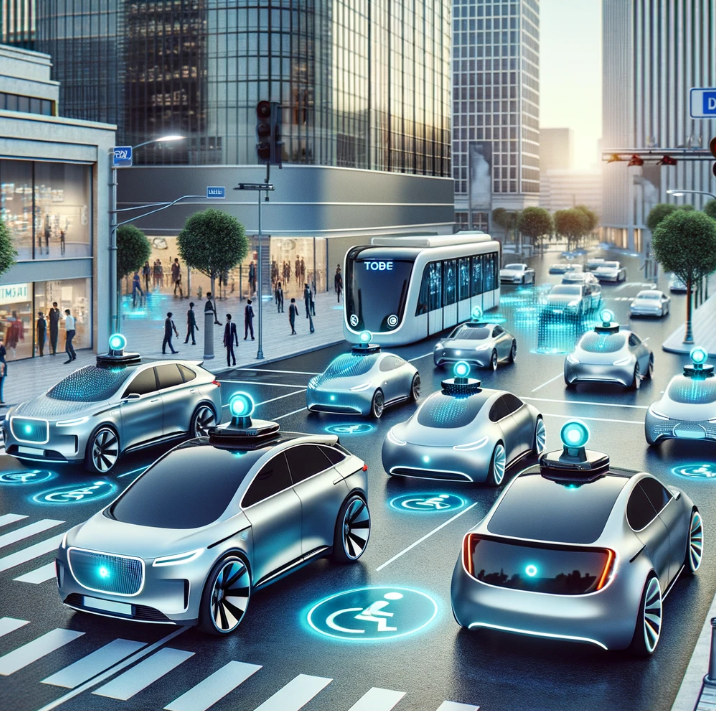Autonomous Vehicles: Towards a Future of Intelligent and Safe Mobility
Autonomous vehicles, also known as self-driving cars, have been a topic of great interest and excitement in recent years. With advancements in technology and the potential to revolutionize transportation, autonomous vehicles are paving the way towards a future of intelligent and safe mobility. This article explores the benefits, challenges, and potential impact of autonomous vehicles on society.
The Benefits of Autonomous Vehicles
1. Safety: One of the primary advantages of autonomous vehicles is their potential to significantly reduce accidents caused by human error. According to the World Health Organization, over 1.35 million people die each year in road traffic accidents. Autonomous vehicles, equipped with advanced sensors and artificial intelligence, can detect and respond to potential hazards faster than human drivers, potentially saving countless lives.
2. Efficiency: Autonomous vehicles have the potential to optimize traffic flow and reduce congestion. By communicating with each other and the surrounding infrastructure, they can coordinate movements, merge lanes smoothly, and choose the most efficient routes. This can lead to shorter travel times, reduced fuel consumption, and lower emissions.
3. Accessibility: Autonomous vehicles have the potential to provide mobility to those who are unable to drive, such as the elderly or disabled. This can enhance their independence and quality of life, allowing them to travel safely and conveniently to their desired destinations.
The Challenges of Autonomous Vehicles
1. Technological Limitations: While autonomous vehicles have made significant progress, there are still technological challenges to overcome. Adverse weather conditions, complex urban environments, and unpredictable human behavior pose difficulties for autonomous systems. Further advancements in sensor technology, machine learning algorithms, and real-time data processing are necessary to address these challenges.
2. Legal and Regulatory Framework: The deployment of autonomous vehicles raises legal and regulatory questions. Who is responsible in the event of an accident? How should liability be determined? Establishing a comprehensive legal framework that addresses these issues is crucial to ensure the safe and responsible use of autonomous vehicles.
3. Public Acceptance: Acceptance and trust in autonomous vehicles are essential for their widespread adoption. Many people are skeptical about relinquishing control to a machine. Public education and awareness campaigns, along with transparent testing and safety standards, are necessary to build trust and acceptance among the general public.
The Potential Impact of Autonomous Vehicles
1. Transportation Infrastructure: The widespread adoption of autonomous vehicles could lead to significant changes in transportation infrastructure. With fewer accidents and optimized traffic flow, the need for traffic lights, stop signs, and parking spaces may decrease. This could free up space for other purposes, such as green spaces or pedestrian-friendly areas.
2. Economic Disruption: The rise of autonomous vehicles could disrupt various industries. For example, taxi and truck drivers may face job displacement as autonomous vehicles become more prevalent. However, new job opportunities may arise in areas such as vehicle maintenance, software development, and data analysis.
3. Environmental Impact: The increased efficiency of autonomous vehicles can contribute to reducing greenhouse gas emissions. By optimizing routes and reducing traffic congestion, autonomous vehicles can help combat climate change and improve air quality in urban areas.
Autonomous vehicles have the potential to revolutionize transportation by providing intelligent and safe mobility. The benefits of autonomous vehicles include improved safety, increased efficiency, and enhanced accessibility. However, challenges such as technological limitations, legal and regulatory frameworks, and public acceptance need to be addressed. The potential impact of autonomous vehicles extends beyond transportation infrastructure to economic disruption and environmental benefits. As technology continues to advance, it is crucial to ensure that autonomous vehicles are developed and deployed responsibly, with a focus on safety, efficiency, and the well-being of society as a whole.































+ There are no comments
Add yours